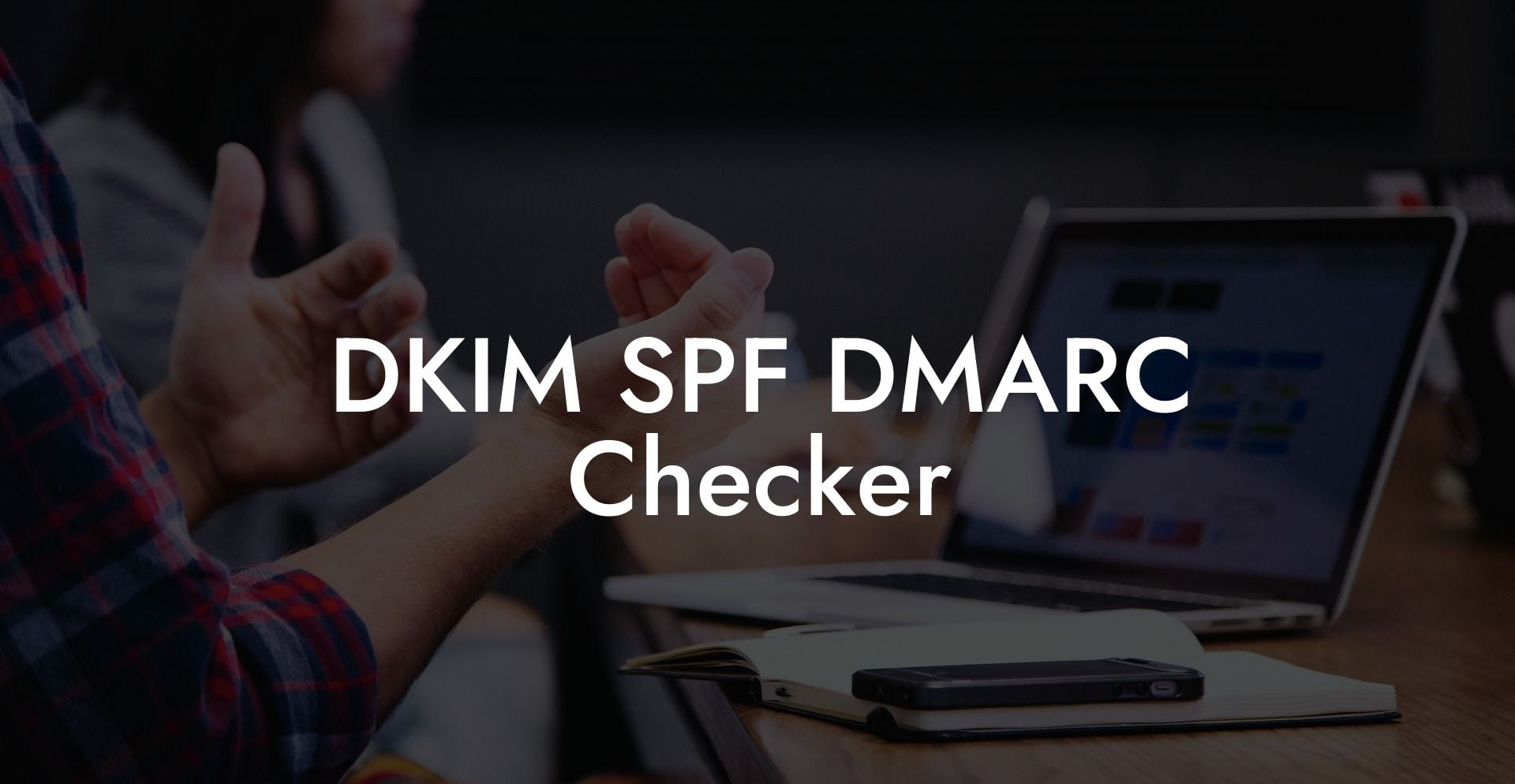In today's world of increasing cyber threats, email security holds paramount importance. One effective approach to secure your emails is by implementing authentication protocols like DKIM, SPF, and DMARC. To better understand, maintain, and troubleshoot these email security protocols, it is essential to utilize a reliable DKIM, SPF, and DMARC checker. In this article, we will delve into the significance of these three security measures and provide a comprehensive guide on how a DKIM, SPF, and DMARC checker can bolster your email security.
DKIM SPF DMARC Checker Table of Contents
Understanding DKIM, SPF, and DMARC
DomainKeys Identified Mail (DKIM)
DKIM is an email authentication protocol that allows a sender to cryptographically sign an email, verifying the email's legitimacy. It helps reduce spam and phishing attempts by proving that the email is genuinely from the specified domain and has not been tampered with during transmission.
Sender Policy Framework (SPF)
Protect Your Data Today With a Secure Password Manager. Our Top Password Managers:
SPF is an email validation protocol that allows the domain owner to specify which mail servers are authorized to send emails on their behalf. This helps recipients determine whether an email is genuine and helps in the reduction of spam and phishing attempts.
Domain-based Message Authentication, Reporting, and Conformance (DMARC)
DMARC is a protocol that brings together DKIM and SPF. It enables the domain owner to publish policies outlining how a recipient's server should handle emails that fail DKIM or SPF authentication. These policies can range from allowing the email to pass through, marking it as spam or entirely blocking the email.
Why Use a DKIM, SPF, and DMARC Checker?
- Verify domain authenticity: A checker enables you to verify that your domain's DKIM, SPF, and DMARC settings are configured correctly, ensuring your emails are protected from security threats and deliverability issues.
- Identify issues: In case of configuration errors or invalid settings, a checker helps you quickly diagnose any issues leading to email authentication failures.
- Monitor compliance: As authentication protocols evolve, you must examine your email security settings continuously. Using a checker eases the process, ensuring your domain remains compliant with the latest email authentication best practices.
- Build sender reputation: By verifying and maintaining your domain's email authentication settings, you build a positive sender reputation, reducing spam and improving email deliverability.
DKIM SPF DMARC Checker Example:
Let's assume that your domain is "example.com" and you have recently set up DKIM, SPF, and DMARC. You want to ensure your email authentication settings are accurately configured. By using a DKIM, SPF, DMARC checker, you can follow these steps:
- Enter your domain, "example.com", into the checker's input field.
- Click on the "Check" or "Verify" button to run the checks.
- Examine the generated report, providing details about each authentication setting.
- Analyze the DKIM, SPF, and DMARC settings to determine if they are configured correctly or have any issues. You may need to correct any misconfigurations or resolve inconsistencies to optimize email deliverability.
The DKIM, SPF, DMARC checker will provide insight into your domain's email authentication configuration, ensuring your emails are genuine and secure from potential cyber threats.
With escalating cyber threats and the urgent need for robust email security, it has become crucial to understand and implement DKIM, SPF, and DMARC authentication protocols. Utilizing a reliable DKIM, SPF, and DMARC checker is an essential step towards strengthening your email security and ensuring an impeccable sender reputation. We encourage you to explore more about these protocols and other cybersecurity measures on Voice Phishing to keep your information safe and secure. Please feel free to share this guide with friends, colleagues, and anyone you think might find it helpful.
Protect Your Data Today With a Secure Password Manager. Our Top Password Managers:















